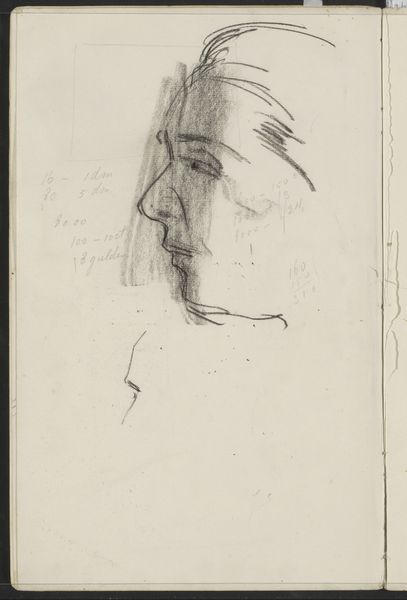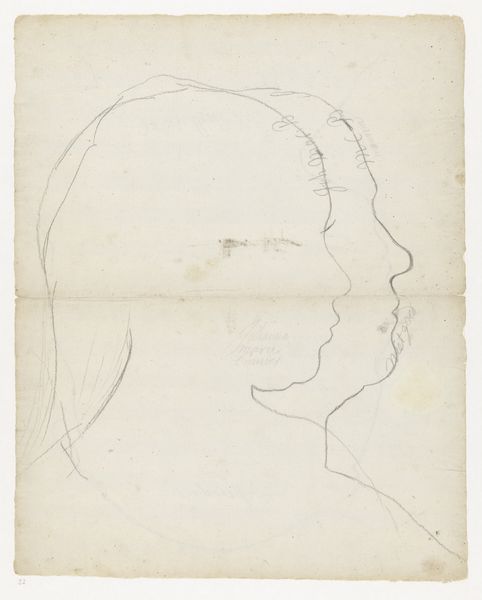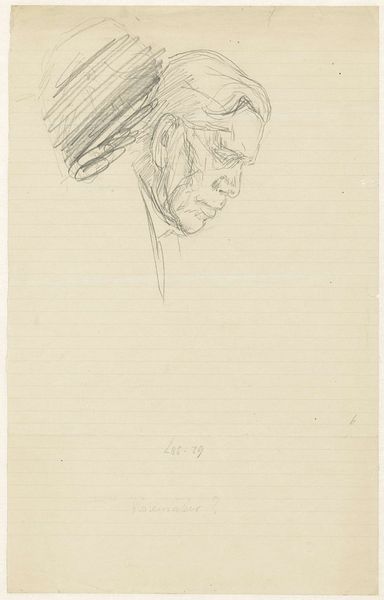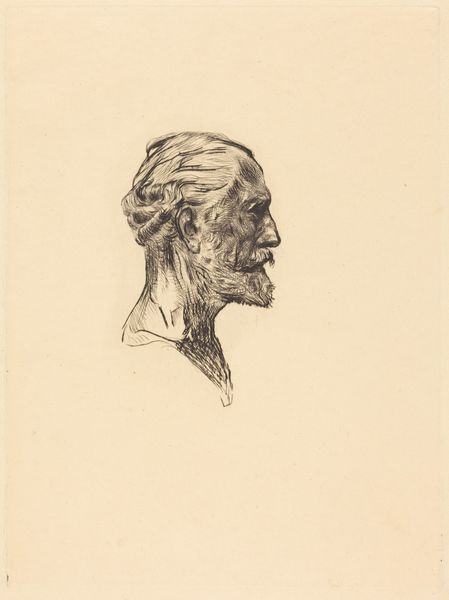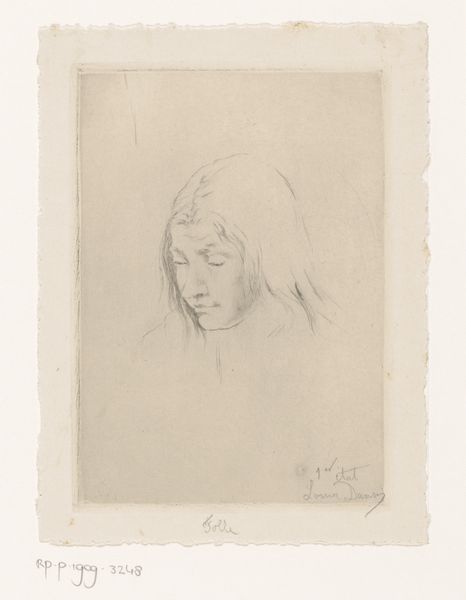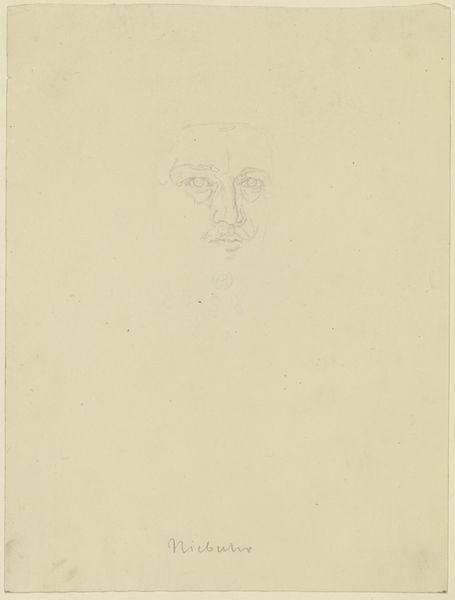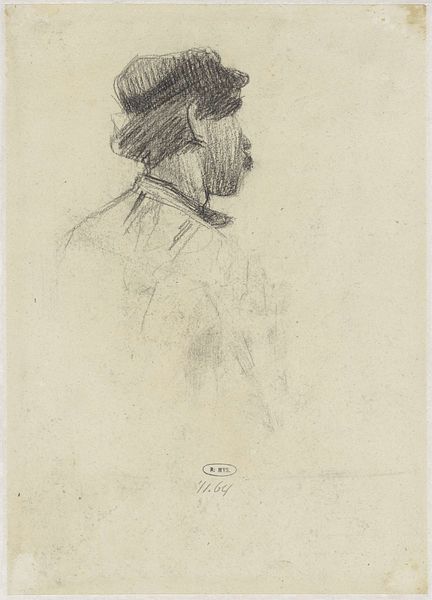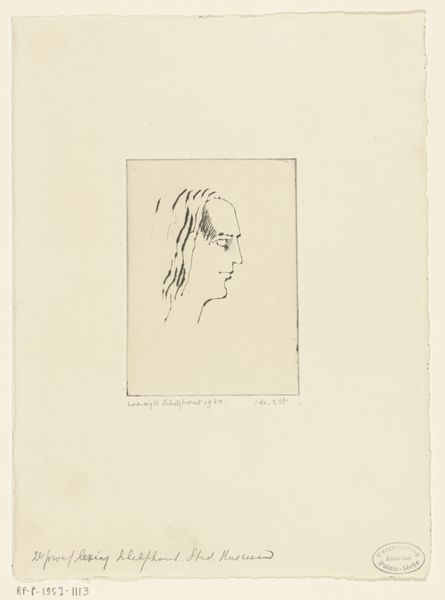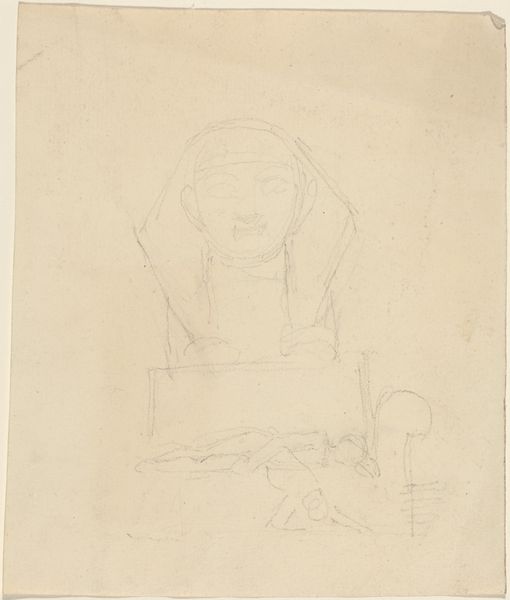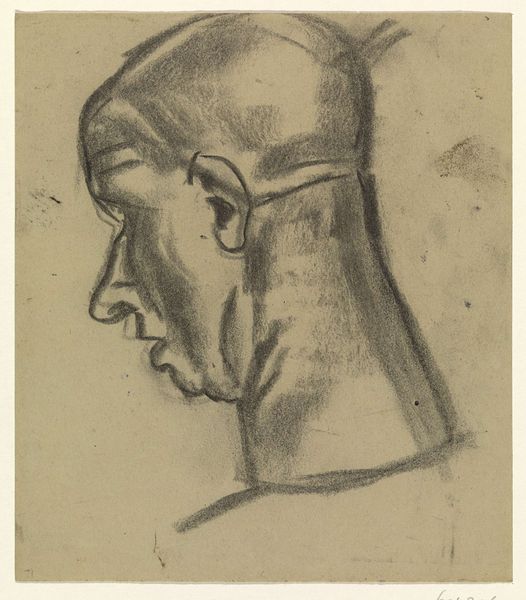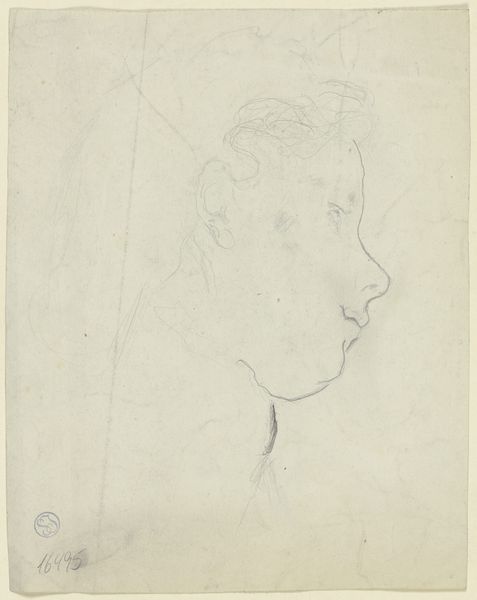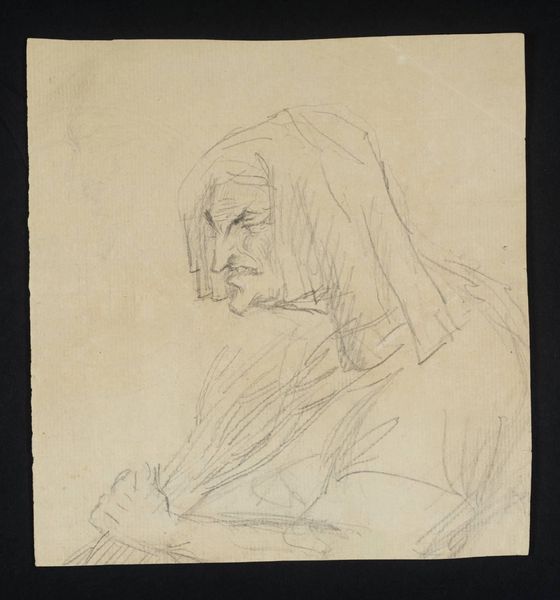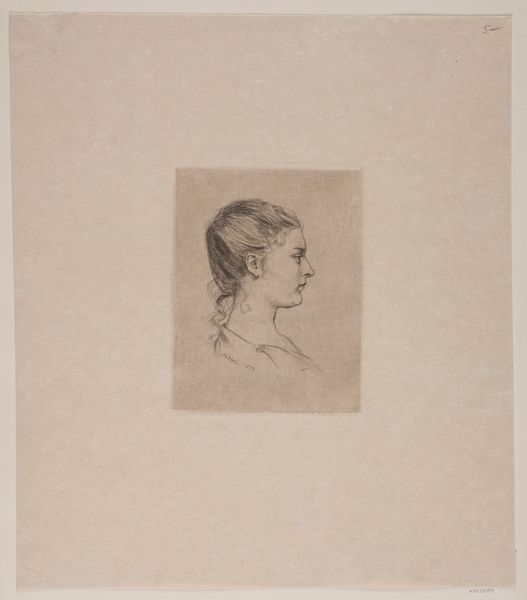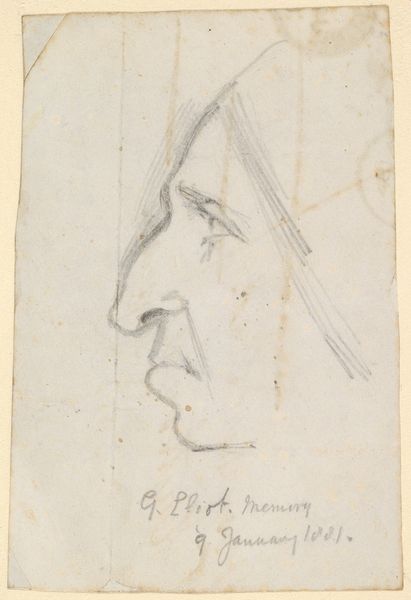![Untitled [head of a woman turning away] by Richard Diebenkorn](/_next/image?url=https%3A%2F%2Fd2w8kbdekdi1gv.cloudfront.net%2FeyJidWNrZXQiOiAiYXJ0ZXJhLWltYWdlcy1idWNrZXQiLCAia2V5IjogImFydHdvcmtzLzYzMzUyMTFiLWNkZjktNGU5Zi04ZDZkLTk0YWNmOGMxOGM0Ny82MzM1MjExYi1jZGY5LTRlOWYtOGQ2ZC05NGFjZjhjMThjNDdfZnVsbC5qcGciLCAiZWRpdHMiOiB7InJlc2l6ZSI6IHsid2lkdGgiOiAxOTIwLCAiaGVpZ2h0IjogMTkyMCwgImZpdCI6ICJpbnNpZGUifX19&w=3840&q=75)
drawing, pencil
#
portrait
#
drawing
#
figuration
#
bay-area-figurative-movement
#
pencil
Dimensions: overall: 21.6 x 27.9 cm (8 1/2 x 11 in.)
Copyright: National Gallery of Art: CC0 1.0
Curator: This is an untitled pencil drawing by Richard Diebenkorn, depicting the head of a woman, created sometime between 1955 and 1967. Editor: It's remarkably simple, isn't it? So few lines, but they convey a profound sense of introspection. There's almost a melancholy to the downturned gaze. Curator: Absolutely. Diebenkorn, even in this seemingly quick sketch, manages to capture a palpable sense of emotion. It invites reflection on the psychology of turning away. What does it mean to avert one's gaze, both literally and metaphorically? Editor: Considering the period, the 50s and 60s, I can't help but wonder about the woman's role in society. Was she turning away from those expectations, or being forced to turn away? The pose certainly suggests a sense of detachment from the viewer, or maybe even a reluctance. Curator: That's a compelling reading. The head covering, while simply rendered, carries its own historical weight. Depending on cultural context, it can symbolize anything from piety to oppression. It is worth studying what such a familiar form might symbolize or trigger emotionally, even for modern audiences. Editor: Indeed. Diebenkorn often explored figuration, so this drawing exists within a larger body of work where the female figure appears and reappears, engaging social expectations in American life. This work really is about representation of a social type and about how social and political structures govern women. Curator: It's fascinating how a seemingly simple drawing can unlock such complex layers of interpretation. The starkness of the medium only intensifies that feeling. Editor: A perfect example of how a humble material can carry powerful cultural and emotional meanings. Curator: A study in suggestion as much as a record of reality, inviting the audience to partake in the construction of this figure's personal history. Editor: Yes, I walk away with a deeper appreciation for the visual symbols around representations of women during that period. I'm intrigued by her gaze and story now.
Comments
No comments
Be the first to comment and join the conversation on the ultimate creative platform.
